Why Planetary Landing Plume Effects Are Important
Plume Effects on the Moon
…at 300 feet, we picked up a tremendous amount of dust; much more so than I expected…the dust went as far as I could see in any direction and completely obliterated craters and anything else. All I knew was there was ground underneath that dust…I couldn’t telll what was underneath me…I was just going to have to bite the bullet and land, because I couldn’t tell whether there was a crater down there or not.


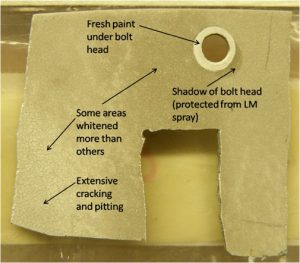

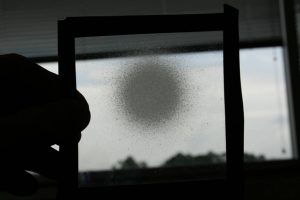
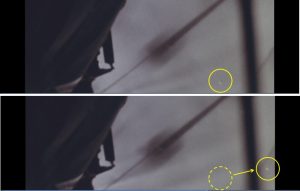
On the Moon, the plume does not generally dig a crater or deep scour hole. this is because there is no significant atmosphere on the Moon to focus the rocket exhaust onto a narrow patch. Instead, it is spread out with very gradual pressure gradients on the surface. The main effect is to sweep away the loose material. The plume also injects gas into the pore spaces between the sand grains, causing chemical contamination that could disturb science measurements. It also causes a change in the surface texture of the lunar soil over a wide area about 100 m diameter (order of magnitude). The exact mechanism that causes this texture change over that size area is not yet known.
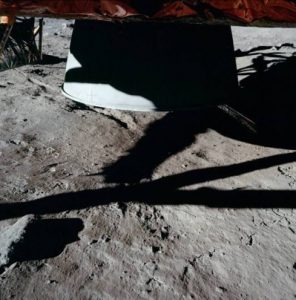
Plume Effects on Asteroids
For asteroids we have very little data how a rocket thruster will disrupt the surface. We know that asteroids are covered with regolith (rocks, gravel, sand and dust), and that collisions between asteroids knock dust clouds into space. These dust clouds get swept by the sun’s radiation pressure to form a long tail of dust pointing away from the asteroid.
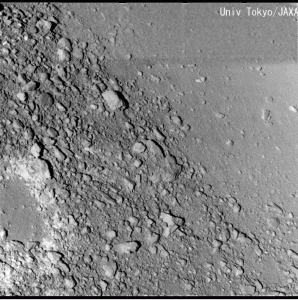
Asteroids have very little gravity. Often they are held together more by cohesion than by gravity. Our work suggests the following processes will probably occur:
- A rocket thruster’s high speed gas can scour material completely off the surface into space, but it will hang around the asteroid creating a risk for spacecraft operating near the asteroid.
- If the spacecraft is close enough to the asteroid, the thruster can inject significant amounts of gas into the pore spaces between the grains of regolith. This “bulb” of subsurface gas pressure will then blow material off the asteroid back toward the spacecraft.
Plume Effects on Mars
For large, human-class missions on Mars, all the research concurs: there will be very deep, violent cratering of the regolith that can pose serious hazards to the life of the crew. This is very different than what happened during the lunar landings. It is also very different than what happened on the smaller, robotic landings on Mars. The reason it is so different? (1) Mars has larger gravity and requires larger landers for the long human-class missions, compared to the Moon. (2) Mars has an atmosphere that focuses the rocket exhaust into a jet, which creates sharp pressure gradients on the soil causing it to fail by shearing as well as by driving pressure into the subsurface, which we call Bearing Capacity Failure (BCF) and Diffusion-Driving Shearing (DDS), neither of which can happen on typical lunar soil. (3) Martian soil is much weaker and more porous than lunar soil. Lunar soil has been gardened by micrometeoroids and thermal cycled by direct sunlight for billions of years in vacuum. Martian soil has experienced geological sorting and has not endured the degree of micrometeoroid bombardment or thermal cycling because its atmosphere protects the surface. These three factors mean that human-class landings on Mars will be in a different regime of behavior than all prior experience. It will be a lot like landing a rocket on desert sand on Earth, blasting a deep and wide hole, and shooting rocks back up at the lander at high speed.
The Viking spacecraft landings on Mars minimized its disturbance of the soil by using a “showerhead” rocket nozzle that broke the plume into 18 tiny jets. This would cause the rocket exhaust to mix with the surrounding atmosphere better, causing the jets to be much shorter so they would not dig such deep holes in the soil. Still, the soil disturbance could be seen in the images around the lander. The jets probably dug holes in the soil that collapsed after the thrusters were shut off, so all that was seen after landing were the residual, collapse craters.
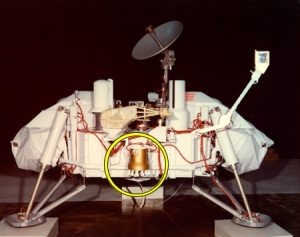
For the Mars Phoenix lander, the much larger-diameter rocket nozzles had greater potential to dig holes, but there was a solid sheet of ice jus a few centimeters beneath the top of the soil and that minimized the amount of disturbance. The rocket exhaust blew off this thin layer of soil and uncovered the ice. This lander used pulsing rocket exhaust, so the shock effects of the periodically diffusing gas fluidized the soil and it was easily swept away. This mechanism was dubbed “Diffused Gas Explosive Erosion” by its discoverers, Manish Mehta (NASA/MSFC, part of the CLASS Planetary Landing Team) and Anita Sengupta (NASA/JPL). The presence of the ice table shows the effectiveness of landing pads for planetary landings. The ice was effectively the landing pad covered by a thin layer of soil.
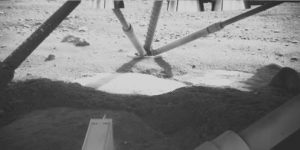
For the Curiosity landing, a Sky Crane was used to lower the rover to the surface while keeping the rocket thruster nozzles higher above the surface to reduce plume effects. Still, simulations by Anita Sengupta showed that the supersonic cores of the jets from these nozzles would still reach all the way to the soil (they are much longer on Mars than in the thicker atmosphere of Earth), and they would blow holes in the soil that would redirect ejecta back toward the Curiosity rover. Indeed, after landing there was gravel found on the top of the rover, and one of the wind sensors was broken, believed to be the result of gravel striking it at high speed. Despite the obvious damage, it would have been much worse except for the fact that the regolith was shallow at this landing site, so the bedrock just below the surface minimized the depth of holes dug by the jets and minimized the amount of material blown back at the rover.

For human-class landers (20 to 60 tons mass), the effects will be far worse and will pose a hazard to the spacecraft. This will be explained on the next page about the research our team members have accomplished for Mars plume effects.
Next: The Science of Plume Effects >>
<< Return to Main Page